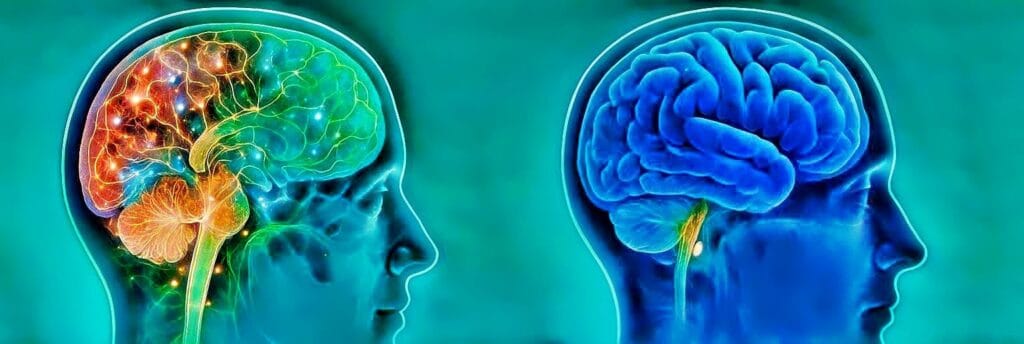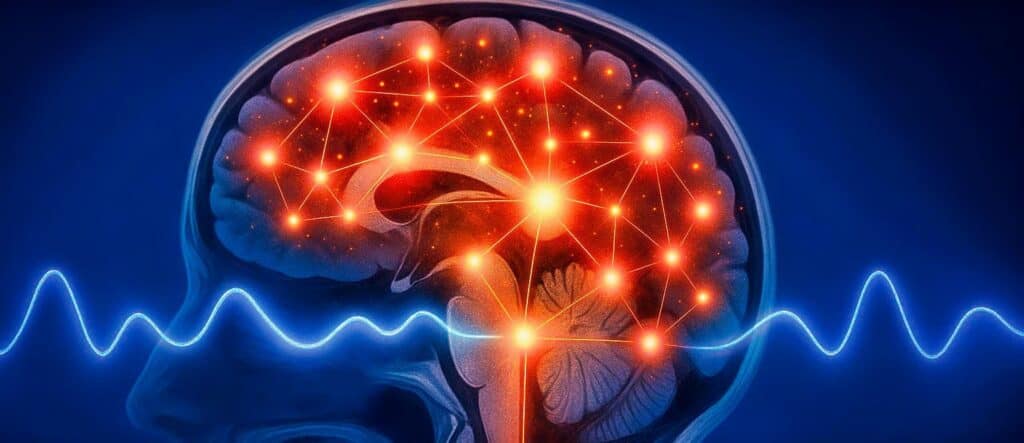Your Brain on Stillness
For thousands of years, meditation has been regarded as a spiritual discipline. However, over the past few decades, neuroscientists have been examining the brain to uncover what actually occurs during sustained contemplative practice. The results are striking. Meditation doesn’t just calm you down—it rewires your brain, down to its structure, function, and chemistry.
This article explores the neuroscience of meditation in plain language, backed by hard data. And if you’re curious to go deeper into direct experience, our companion guide Good Vibrations: Primordial Sounds of Existence offers practices that embody this transformation through sacred sound.

Cortical Remodeling
MRI scans reveal that regular meditators show increased cortical thickness in regions associated with attention, memory, and self-awareness. This includes the prefrontal cortex and the anterior cingulate cortex—key areas for emotional regulation and executive functioning.
Astonishingly, long-term meditators also show less age-related brain shrinkage. In some cases, the brain of a 40-year-old seasoned practitioner appears more youthful than that of a non-meditating 25-year-old. This suggests meditation might not just train your brain—it might preserve it.
The Amygdala Shrinks
The amygdala is often referred to as the brain’s “alarm bell” for stress and fear. Eight weeks of mindfulness meditation is enough to reduce the size of the right amygdala. This change correlates with participants reporting lower stress levels and improved coping skills.
It’s not just that meditators feel calmer. Their threat-detection systems physically shrink. Imagine replacing a faulty smoke detector that goes off every time you toast bread. That’s what meditation does to your stress reactivity.
From Effort to Effortlessness
EEG studies have shown that novice meditators generate more gamma waves when practicing loving-kindness or mindfulness meditation. This suggests their brains are working hard to learn new skills and stay present. But seasoned meditators display synchronized gamma activity across distant brain regions—a sign of integrated, effortless awareness.
As expertise increases, meditation transitions from an efforting mental task to a state of whole-brain coherence. In this sense, stillness is not passive; it’s integrative.

Default Mode Downregulation
Meditation decreases activity in the Default Mode Network (DMN), the brain network associated with mind-wandering and self-referential thinking. When the DMN quiets, we experience less rumination and more presence. Functional MRI scans show this effect consistently in long-term practitioners.
This shift explains why meditation often leads to a sense of spaciousness or timelessness. The narrative self recedes, making room for raw, unfiltered experience.
Neurochemical Reset
Meditation changes the brain’s chemical cocktail:
- Dopamine (pleasure, motivation): Increases.
- Serotonin (mood, calm): Modulated upward.
- Melatonin (sleep, repair): Boosted.
- Cortisol & Norepinephrine (stress hormones): Decreased.
Instead of taking a pill to suppress symptoms, meditation rebalances the system from within. It’s a neurochemical self-regulation technique available to anyone with a breath and a few minutes.
Reshaping Perception, Not Just Reaction
Perhaps the most profound shift comes not in behavior, but in perception. Meditation cultivates the capacity to observe thoughts and emotions without becoming entangled in them. This process—sometimes called “decentering”—frees us from the trance of self-narrative.
As reactivity decreases, openness increases. The meditator becomes more curious, less defensive, more attuned to others. Compassion grows not because we’re trying to be nice, but because our filters thin and our presence deepens.

Experience It for Yourself
The science is clear: meditation changes the brain. But science can only point. To feel the transformation, you must practice.
If you’re ready to explore this firsthand, Good Vibrations: Primordial Sounds of Existence is a portal. It introduces you to the living vibration of ancient sounds like HU and OM—not just as chants, but as energetic transmissions that activate the body as a resonance chamber.
Whether you’re a skeptic, a seeker, or somewhere in between, your nervous system already knows how to respond. The brain doesn’t just interpret sound. It becomes it.
Stillness isn’t the absence of activity. It’s the presence of coherence.
And coherence is contagious.
Explore the resonance of HU and OM through guided practices in Good Vibrations.
Download a free chapter at HarpGnosis Books
Join Us for a Day of Sacred Sound
John Harper is a Diamond Approach® teacher, Enneagram guide, and a student of human development whose work bridges psychology, spirituality, and deep experiential inquiry. He is the author of The Enneagram World of the Child: Nurturing Resilience and Self-Compassion in Early Life and Good Vibrations: Primordial Sounds of Existence, available on Amazon.

